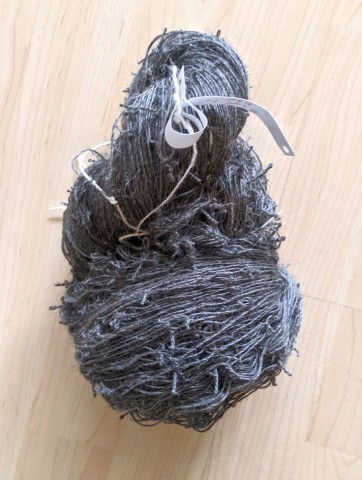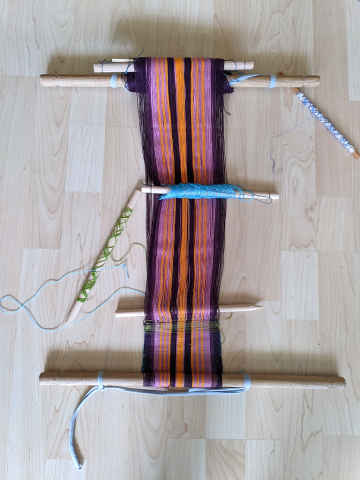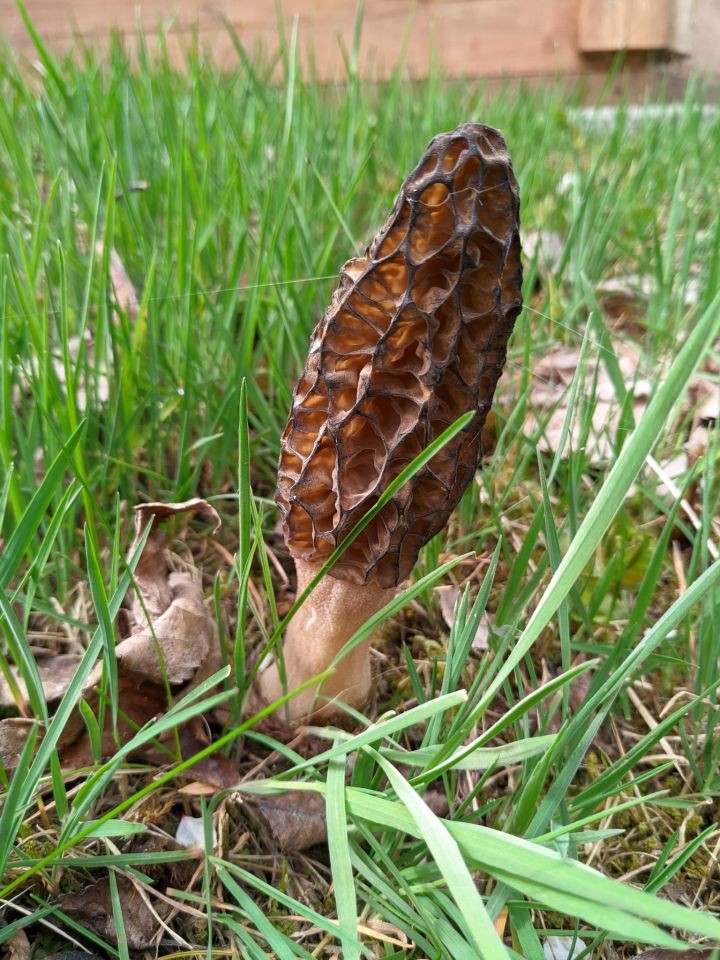So - let's look at the individual limiting factors, or potential limiting factors, to your spinning speeds.
For the actual spinning process, there's the insertion of rotation - your rotational speeds achievable with your tool - and the drafting speed. You'll run into one of those before the other, and inevitably, that is what will limit your maximum achievable speed. We'll look at the rotational speeds first.
How you get the rotation that you want or need depends on the tool you're using, of course. Most modern hand-spinners use a treadle wheel (at least my impression is that most modern spinners are wheel-spinners). Here, your rotation is limited by the speed with which you can treadle and the ratios you can have between your wheel and your flyer and/or bobbin (depending on wheel construction). In general, if your wheel is larger, you will get higher speeds. If the size difference between your wheel and flyer/bobbin is larger, you will get higher speeds; so you can tune your wheel, to a degree, with an appropriately smaller-sized bobbin. However... there's limits to that; I have once tried to super-tune a wheel that I have, and it did not work in a rather spectacular manner. Because you also have slippage on a wheel, and changing the diameter of the pulley part of your flyer or whorl will change friction between your drive band and the pulley... and if the angles don't lead to enough frction to get everything running smoothly, well, your pulley can be as theoretically well-suited for high speeds as can be, it will still not work properly. So there's limits to what you can do regarding the transmission.
If we look at the hand-spindle, the speeds you will be able to get depend on a lot more factors. Your technique of how you set the spindle into motion; if you use the finger flick, the thickness of the upper end where you grasp the spindle is one of them (thinner means higher speeds achievable) and your finger strength, as well as the weight and shape of the whorl will all influence how well your spindle runs. Of course the frequency of your setting the spindle in motion also is important, as well as the amount of time that this action takes away from your drafting time if you're spinning long suspended.
If your tool is an e-spinner, your rotation speed limit is the limit of what the tool will deliver. This means it takes a bit of stress away from your body - you don't have to do movements (and maybe train them) to achieve high speeds, just twist a knob or press the pedal down some more, and you get more twist. The speed I'm running my e-spinner at? Well. According to its manual, it can get up to 1650 rpm with the foot pedal attached (which is the case when I'm working), and I have very rarely, if ever, cranked it up to max. But even if it's "only" running at about 1000, or 1200 rpm, I'm pretty sure that I would not be able to get that speed on a treadled spinning wheel, let alone on the hand-spindle.
Which means that for me, when working the e-spinner, the limiting factor is my drafting speed... which is what we'll be looking at next.








